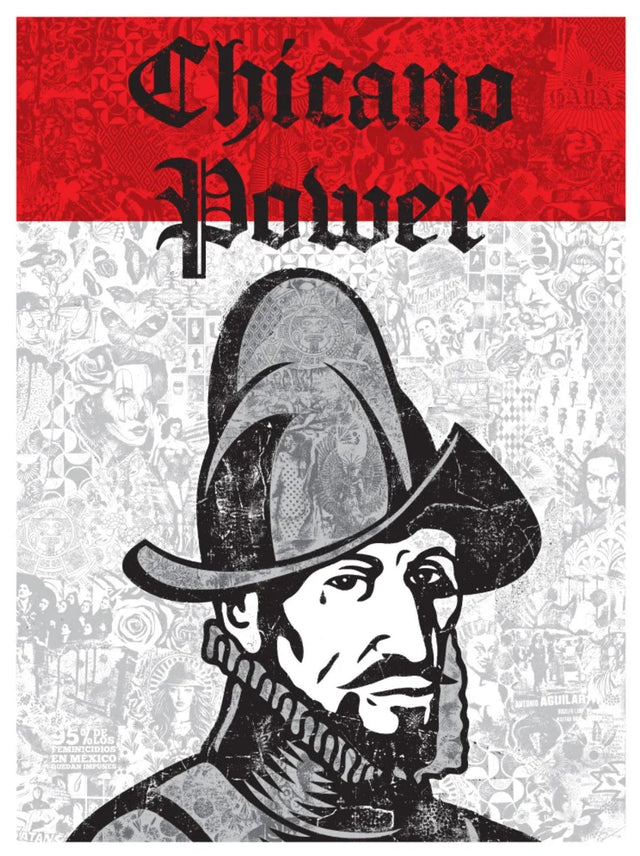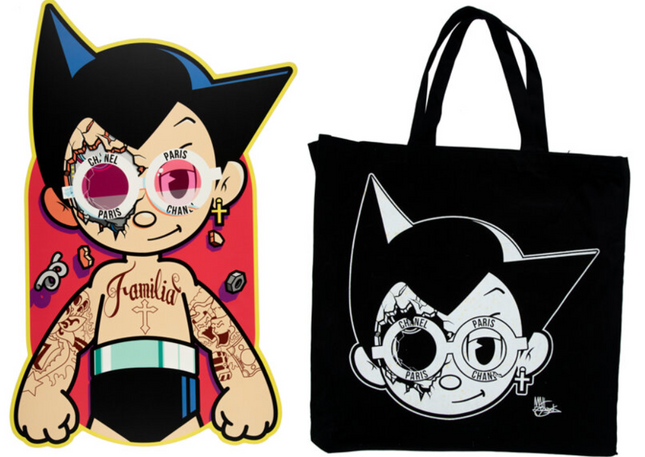
Latin

Matt Gondek Mighty Vibras Offset Lithograph Print on Wood by J Balvin x Matt Gondek
Mighty Vibras Offset Lithograph Print on Wood Panel by J Balvin x Matt Gondek with Tote Bag Limited Edition Graffiti Street Pop Artwork. 2018 Signed & Numbered Limited Edition of 300 Artwork Size 14x23 Tattooed Up Astro Boy with Chanel Glasses. Bag Has Minor Spot Staining in Upper Area. Artwork Perfect to Near Perfect. J Balvin x Matt Gondek Cultural Synthesis in Street Pop Art The "Mighty Vibras" offset lithograph print on a wood panel is a dynamic fusion of music, street culture, and contemporary art. A collaborative piece by Colombian reggaeton superstar J Balvin and Los Angeles-based artist Matt Gondek, this artwork captures the essence of Street Pop Art and graffiti Artwork. Released in 2018, the limited edition of 300 signed and numbered pieces reflects the global influence of urban art forms and the increasingly porous boundaries between art, music, and fashion. The "Mighty Vibras" piece vividly portrays a tattooed-up Astro Boy, complete with Chanel glasses, a symbol of luxury infused with urban grit. This character, an icon of Japanese manga, is reimagined through the lens of street culture and high fashion, signifying the interconnected nature of global pop culture. Gondek's deconstructive style, known for taking apart characters and piecing them back together, is evident in the artwork's fragmented features, which are visually arresting and thematically resonant. J Balvin's influence on the piece brings a cross-cultural element that is palpable in the artwork's bold colors and the inclusion of the word "Familia" tattooed across the character's chest, a nod to the themes of kinship and belonging that pervade Balvin's music. The size of the artwork, at 14x23 inches, makes it a statement piece that stands out in any setting, from a casual living room to a high-end gallery. Intersection of Art and Merchandise Accompanying the print is a tote bag featuring the same design, highlighting the growing trend of art becoming wearable and usable in daily life. This approach to art merchandise expands the artwork's reach beyond the traditional confines of the art world, allowing it to become a part of the consumer's everyday experience. The tote bag is a mobile canvas, spreading the visual impact of the "Mighty Vibras" artwork to a broader audience. The synthesis of J Balvin's musical heritage and Matt Gondek's artistry in "Mighty Vibras" exemplifies the potential of collaboration across different creative industries. It also illustrates the power of street art to transcend its origins, infiltrating mainstream culture and fashion and becoming an emblem of contemporary lifestyle. "Mighty Vibras" is more than just an artwork; it is a cultural artifact that encapsulates the spirit of the times. It stands as a testament to the creative synergy between J Balvin and Matt Gondek, blending street art's raw energy with pop culture's gloss and, in doing so, creating a new visual language that speaks to a diverse, global audience. The limited edition nature of the piece, along with its associated merchandise, cements its status as a collectible item that holds both artistic and cultural value.
$1,129.00


